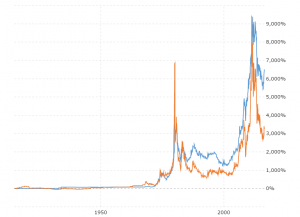Roman Coins 101
Most coin collectors build their collections around modern, or fairly modern coins. For many a 19th century coin is ‘old’, but of course coins have been around for thousands of years. Surely there can be nothing more magical than owning a coin that is 2,000 years old, and has passed through the hands of people so very different – and yet also the same – as we are. Old coins are a fabulous introduction into history, and a great way to draw children into collecting.
An especially interesting period for coins was the days of the Roman Empire, straddling both sides of the birth of Christ. The Romans minted many coins, and although at first we might think they could only be seen in museums, in reality there are plenty of Roman coins in the coin market, and while not cheap, they do provide an excellent investment, and are almost certain to increase in value over time. So let’s look at the major Roman coins, and focus on gold, which always has the greatest allure.
Rome was a republic for 500 years, from 500 B.C. to 27 B.C. During that time coins were minted from metals such as bronze and silver, and it was only when the Empire was founded by Augustus in 27 B.C. that coins became important as symbols of imperial authority, as well as for exchange. The Empire lasted as many years as the Republic, until 476 A.D.
The first, and primary gold coin was the Aureus, first created between 200 and 100 B.C. At first gold was considered ‘un-roman’, because it represented luxury, something never valued during the Republic. All that changed in the Empire, where luxury became a necessity of status, and wealth increased enormously. The Aureus weighed 8 grams, about ¼ of an ounce, and was one-fortieth of a Roman pound. During the reign of the Emperor Nero the weight was decreased to one-forty-fifth of a pound, and fell to one-fiftieth of a pound by the end of the second century A.D. For comparison, the current USA Gold Eagle coin weighs 31.10 grams.
Although the size was reduced, the purity remained the same, so all Roman gold Aurei are 99% pure. One side shows the head of the emperor of the time, and the design on the reverse varies. For collecting the aureus is named after the emperor, beginning with Julius Caesar and ending with Constantine the Great. Their value depends on both the Emperor and of course the quality, with mostly lower-grade coins being accessible to private collectors.
The Aureus was replaced in 301 A.D. by the Solidus, a lighter coin of 4.5 grams. It increased in circulation under Constantine, and it continued beyond the end of the Roman Empire, until it was replaced in 751 by the silver pound/shilling/pence system, by the first Carolingian king, Pepin the Short. It was not formally abolished until 1092. The Solidus was slightly less-pure than the Aureus, being usually 95.8% pure gold. Again, the obverse carries the head of the Emperor.
For collectors having a Roman gold coin adds value to a collection, besides being a window into ancient history. There are other Roman gold coins, such as the Tremissis, which weighs 1.52 grams, and is, as its name suggests, one-third of the value of a Solidus.
















